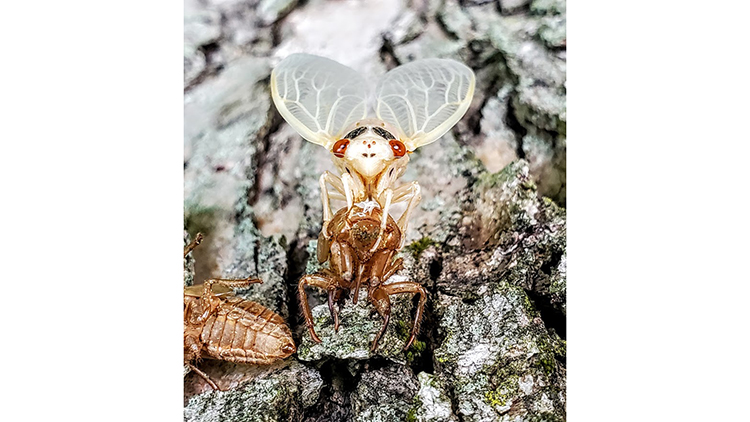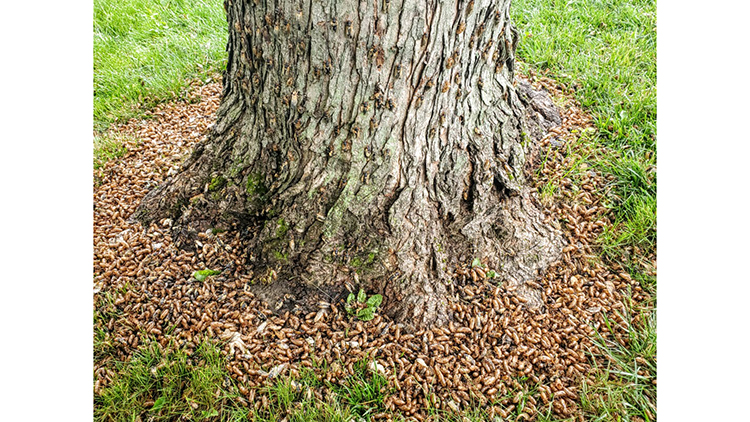
After 17 years underground, billions of cicadas are digging their way out of the soil. Say hello to Brood X!
Brood X cicadas aren’t regular cicadas. Their life cycles are timed so they hatch all at once. This allows them to outnumber their predators and make sure enough will survive to mate and lay eggs.
Life Cycle of a Periodical Cicada
Brood X has been underground since the summer of 2004. They have spent most of their lives as nymphs. They get their nutrients from sucking on sap from roots of trees, shrubs, and grasses. After 17 years, the nymphs crawl to the surface.
They look white at first. After their outer shell hardens, they are brown.

Male cicadas live 2 to 4 weeks. After five days, male cicadas make a vibration to attract females. After mating, female cicadas will lay up to 600 eggs. Six to 10 weeks later, the eggs hatch. The small nymphs fall from the twigs where they hatched. They burrow underground. The life cycle starts over.

Cicadas don’t sting or bite. They don’t destroy crops. They are good for the environment. Their holes aerate the soil. Their remains provide food for predators and nutrients for plants.
Brood X Fun Facts
- Brood X cicadas are hatching in parts of New York, Pennsylvania, New Jersey, Delaware, Maryland, Virginia, North Carolina, Ohio, West Virginia, Kentucky, Tennessee, Georgia, Indiana, Illinois, Michigan, and Washington D.C.
- These cicadas are showing up as thunderstorms on weather radar.
- Cicadas are edible, but people with shellfish allergies should not eat them.
- Female cicadas are silent. Male cicadas can be as loud as a lawnmower.
- This summer, Brood X will hatch as many as 1.4 million cicadas per acre.
What Can You Do? Have you seen these cicadas? Take a photo or video!
Reading Response Click on this link to respond to your reading. Print out the response page or upload it to your classroom site.
Photo and Video Credit: Michael J. Shirey/McGraw Hill



